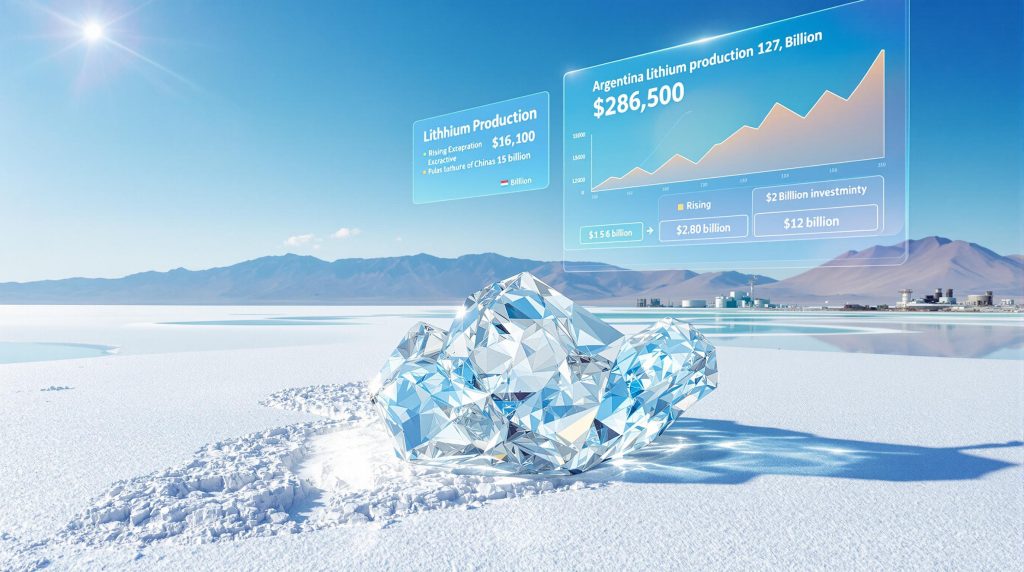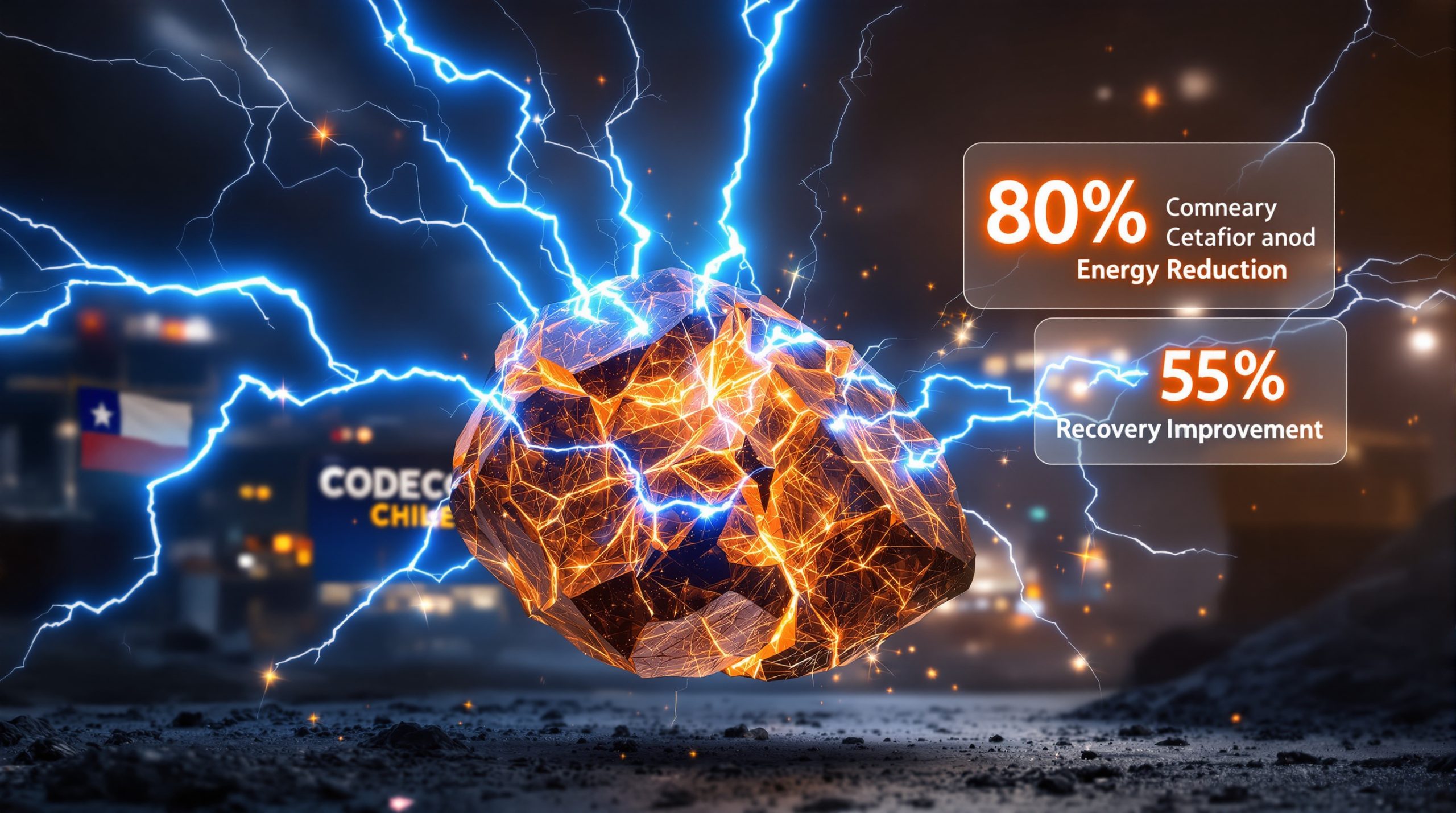Ganfeng Lithium and Lithium Argentina Partnership: Transforming the Global Lithium Landscape
The lithium industry is witnessing a monumental shift as two major players join forces to create one of the world's largest lithium production hubs. This strategic alliance represents not just a significant business merger, but a transformative development for global lithium supply chains, with far-reaching implications for electric vehicle production and renewable energy storage solutions worldwide.
The Strategic Alliance Framework
The Chinese mining giant Ganfeng Lithium has formed a landmark partnership with Switzerland-based Lithium Argentina to jointly operate three major lithium brine projects in Argentina's Salta province. This partnership consolidates operations across neighboring projects in the lithium-rich Pozuelos and Pastos Grandes salt flat basins, creating a unified lithium production powerhouse.
Under the partnership structure, Ganfeng will hold a commanding 67% stake in the new joint venture, with Lithium Argentina controlling the remaining 33%. The alliance plans to invest more than US$2 billion in development, aiming for an ambitious production target of 150,000 tonnes of lithium carbonate equivalent (LCE) annually—positioning it among the world's largest lithium operations.
What makes this partnership technically innovative is its planned implementation of a hybrid extraction system that combines traditional solar evaporation methods with cutting-edge direct lithium extraction (DLE) technology. This approach aims to maximize efficiency while maintaining environmental sustainability in the sensitive salt flat ecosystem.
Projects Under Consolidated Operation
The strategic alliance brings together three neighboring lithium brine projects, each with significant potential when operating under unified management:
- Pozuelos-Pastos Grandes (PPG): Currently 100% owned by Ganfeng Lithium
- Pastos Grandes: 85% owned by Lithium Argentina, with Ganfeng holding the remaining 15%
- Sal de la Puna: 65% owned by Lithium Argentina, with Ganfeng holding 35%
Pozuelos-Pastos Grandes Project Details
The PPG project represents a cornerstone of the partnership's operational portfolio. Situated at an elevation of 3,785 meters above sea level, the project extends across more than 8,664 hectares of the Pastos Grandes salt flat. Its geographic positioning places it 13km south-southwest of Santa Rosa de los Pastos Grandes, 56km southwest of San Antonio de los Cobres, and 154km northwest of Salta city.
The project's technical specifications are equally impressive:
- Processing approach: Combination of brine extraction, solar evaporation, and conventional lithium processing
- Projected lifespan: 25 years with a 3-year startup period
- Production capacity: Up to 25,000 tonnes of lithium carbonate equivalent annually
- Potential production start: 2024
Currently, the project is being executed by Lithea Inc., a Ganfeng subsidiary that took over operations in late 2022 after acquiring the assets from Lítica Resources. The site already features its own operational camp, with plans to expand both capacity and facilities as the consolidated venture takes shape.
Sal de la Puna Project Insights
The Sal de la Puna project, positioned in the Pastos Grandes salt flat in western Salta province, sits at an elevation between 3,800 and 4,000 meters above sea level. Recent exploratory drilling in the project area has yielded significant geological findings that enhance its value within the partnership portfolio.
Recent drilling operations in the Barreal II block in the northern section of the property reached depths of 620 meters below surface, revealing two distinct brine aquifers. Analysis of these aquifers has shown they consist predominantly of alluvial sands with minor halite content. Most notably, the lower aquifer represents the highest-grade lithium interception reported in the entire Pastos Grandes basin, highlighting the exceptional resource quality of this project component.
Earlier drilling programs initially focused on the Almafuerte and Graciela blocks, where teams intercepted an uninterrupted gravel aquifer between 334 and 634 meters in the Almafuerte block. These geological findings provide crucial data for optimizing extraction strategies within the consolidated operation.
Global Market Significance
The Ganfeng-Lithium Argentina partnership stands to significantly impact the global lithium supply landscape. With planned production capacity of 150,000 tonnes of LCE annually, this consolidated operation will rank among the world's largest lithium production centers, strengthening global supply chains with Argentina as a key node.
The alliance's $2+ billion investment commitment demonstrates profound confidence in Argentina lithium brine insights, particularly within the renowned "Lithium Triangle" that Argentina shares with Chile and Bolivia. This investment comes at a critical juncture as global demand for lithium continues to accelerate, driven by electric vehicle manufacturing expansion and growing energy storage requirements.
For context, Ganfeng has already invested US$2.5 billion in Argentina and had projected nearly US$5 billion in total investments across its operations in the country. This latest partnership represents a significant portion of that projected investment, underscoring the company's strategic prioritization of Argentine lithium resources.
Development Strategy and Timeline
The partnership has outlined a comprehensive three-phase development approach designed to methodically build toward full production capacity while optimizing operational efficiency and resource utilization.
A key technological advantage of the consolidated operation will be its hybrid extraction approach. By combining traditional solar evaporation methods with advanced direct lithium extraction (DLE) technologies, the partnership aims to achieve optimal efficiency in lithium recovery while maintaining environmental sustainability standards.
This phased implementation strategy allows for careful scaling of operations, with the Pozuelos-Pastos Grandes component potentially beginning production as early as 2024. Subsequent phases will integrate additional project components while expanding processing capacity toward the ultimate 150,000-tonne annual production target.
The alliance plans to establish a new subsidiary company (name forthcoming) that will manage all operational aspects of the consolidated projects. This unified management structure will enable streamlined decision-making and operational integration across all three project components.
Regulatory Framework and Investment Incentives
The partnership is actively pursuing registration under Argentina's Régimen de Incentivo a las Grandes Inversiones (RIGI), a framework designed to provide fiscal stability and customs benefits for major investments in the country. This regulatory approach is crucial for securing long-term investment protection in Argentina's evolving policy landscape.
The RIGI framework offers significant advantages for large-scale projects, including:
- Fiscal stability provisions that protect against tax increases
- Preferential customs treatment for equipment imports
- Regulatory certainty for long-term capital commitments
- Support from both provincial and national government entities
Notably, Ganfeng recently experienced a RIGI application rejection for its Mariana project expansion in the Salar de Llullaillaco. As explained by Minister Luis Caputo, this rejection stemmed from timing issues: "The Mariana project had started in 2022 and was inaugurated at the beginning of this year, almost at the same time it submitted its application." This timing meant the project could not meet minimum investment requirements for the next two years.
However, the new consolidated project is being structured specifically to meet RIGI requirements from the outset, learning from the previous experience. In contrast to Ganfeng's rejection, Australian company Galan Lithium recently received RIGI approval for a US$217 million lithium project in Catamarca province, demonstrating the framework's viability when properly aligned with project timelines.
Ganfeng's Global Strategic Positioning
As one of the world's largest lithium producers, Ganfeng's expanded investment in Argentina represents a cornerstone of its global strategy to secure diversified lithium resources across multiple continents and geological formations.
The company has already invested US$2.5 billion in Argentina, with projections for nearly US$5 billion in total investment over coming years. This substantial capital commitment in Argentina forms part of Ganfeng's broader global footprint, which includes operations across multiple continents and positions throughout the lithium value chain from mining to processing and battery materials.
This strategic approach offers Ganfeng several competitive advantages:
- Resource diversification reduces dependence on any single lithium source
- Consolidated operations deliver economies of scale in production and logistics
- Advanced technology deployment enhances recovery rates and product quality
- Vertical integration strengthens supply chain control and margin potential
By securing such a significant position in Argentina's lithium sector, Ganfeng reinforces its standing as a global lithium leader while ensuring access to resources necessary for meeting growing worldwide demand.
Economic Impact for Argentina
For Argentina, this partnership represents one of the largest investments in its emerging lithium industry and could significantly enhance the country's position as a global lithium supplier.
The US$2+ billion capital injection will have substantial economic ripple effects throughout the local economy. During construction phases, thousands of direct and indirect jobs will be created, followed by hundreds of permanent positions once operations reach full scale. The projects will also drive infrastructure development in the Salta province region, potentially transforming local communities.
From an export perspective, at full production capacity, the operation could generate hundreds of millions in annual foreign exchange earnings—a crucial boost for Argentina's balance of payments. The projects will also contribute significant tax revenue at local, provincial, and national levels, providing fiscal resources for government services and development initiatives.
Beyond direct economic impacts, the partnership strengthens Argentina's position in the global lithium market, potentially attracting additional downstream investments in battery-grade lithium refinery facilities or even EV manufacturing. This could help Argentina move up the value chain from raw material supplier to higher-value component producer over time.
Production Timeline and Market Alignment
While the partnership has outlined its three-phase development approach, the production timeline will see gradual capacity expansion over several years. The Pozuelos-Pastos Grandes component has potential to begin initial production in 2024, with the consolidated operation scaling up through subsequent phases.
This gradual production ramp-up aligns strategically with projected lithium demand growth curves. As electric vehicle adoption accelerates globally and energy storage deployments expand, lithium demand is expected to grow at double-digit rates through the 2020s. The partnership's production will enter the market during this critical demand expansion phase.
The alliance's hybrid technology approach also positions it favorably in terms of production costs and environmental performance. By combining solar evaporation's low energy requirements with DLE's faster processing times and higher recovery rates, the operation aims to achieve competitive production costs while minimizing environmental impacts—particularly regarding water usage in the arid salt flat environment.
Key Challenges and Considerations
Despite its promising potential, the partnership faces several key challenges that will require careful management:
Water resource management represents a critical consideration in the arid salt flat environment. The operations will need to implement sophisticated water conservation and recycling systems to minimize impact on local aquifers and communities.
Infrastructure limitations in the remote high-altitude location present logistical challenges for construction and operations. Significant investment in road access, power supply, and communications will be necessary to support the large-scale operation.
Technological implementation risks exist with the hybrid extraction approach. While both solar evaporation and DLE technologies are proven independently, their integration at commercial scale will require careful engineering and operational refinement.
Community relations will require proactive engagement and benefit-sharing mechanisms to maintain social license to operate. The projects' social impact management will be as important as their technical execution for long-term success.
Regulatory compliance within Argentina's evolving mining framework will demand ongoing attention and adaptation. The RIGI application process represents just one component of a complex regulatory landscape that includes environmental permits, water rights, and export authorizations.
Furthermore, the partnership must navigate potential lithium market imbalance analysis that could affect pricing and profitability during the project's lifetime. Industry experts are closely monitoring how new projects like this will impact global supply-demand dynamics.
Frequently Asked Questions About the Partnership
What production technology will the partnership use?
The alliance will implement a hybrid technology approach that combines traditional solar evaporation with direct lithium extraction (DLE) methods. This combination aims to maximize efficiency and recovery rates while maintaining environmental sustainability in the sensitive salt flat ecosystem.
How does this partnership compare to other lithium projects in Argentina?
With planned investment exceeding US$2 billion and targeted production capacity of 150,000 tonnes of LCE annually, this consolidated operation would rank among the largest lithium projects not just in Argentina but globally. Most other projects in Argentina have smaller production capacities and investment scales, typically ranging from 20,000-50,000 tonnes annually.
What is the RIGI framework that the partnership is pursuing?
The Régimen de Incentivo a las Grandes Inversiones (RIGI) is Argentina's framework designed to attract major investments by providing fiscal stability, customs benefits, and regulatory certainty. It requires minimum investment thresholds and specific development timelines, offering qualified projects protection from tax increases and preferential customs treatment.
When is production expected to begin?
The partnership has outlined a three-phase development approach, with the Pozuelos-Pastos Grandes component potentially beginning initial production in 2024. The consolidated operation will scale up through subsequent phases over the following years, gradually approaching full production capacity.
How will this partnership affect global lithium prices?
While the significant production capacity could eventually help meet growing global demand, the multi-phase development approach means that full production impact will be gradual. The partnership's long-term contribution to global supply could help stabilize prices as demand continues to grow with electric vehicle adoption, but near-term price effects will likely be minimal until production reaches significant scale.
Conclusion: A Transformative Lithium Alliance
The Ganfeng Lithium and Lithium Argentina partnership represents a watershed moment for Argentina's lithium industry and global lithium supply chains. By consolidating three neighboring projects under unified management with substantial capital investment and advanced technology, this alliance creates one of the world's most significant lithium production hubs.
For Argentina, the partnership offers economic development, export earnings, and strengthened positioning in the global lithium market. For global lithium consumers—particularly electric vehicle manufacturers and battery producers—the alliance promises significant new supply from a stable jurisdiction during a period of rapid demand growth.
As electric mobility and renewable energy storage continue their global expansion, partnerships like this one will play a crucial role in ensuring adequate lithium supply to enable the clean energy transition. The success of this alliance will depend on effective execution across technical, environmental, social, and regulatory dimensions—a complex challenge that both partners appear well-positioned to address.
The partnership could also benefit from Australia lithium tax breaks and similar incentives as global jurisdictions compete to attract lithium investment. Additionally, developments such as the Thacker Pass lithium production in North America will provide interesting comparison points for how this Argentine venture progresses in the global marketplace.
Interested in Staying Ahead of Major Mineral Discoveries?
Discovery Alert's proprietary Discovery IQ model instantly notifies investors of significant ASX mineral discoveries, transforming complex data into actionable insights that could lead to substantial returns. Visit our dedicated discoveries page to understand why major mineral discoveries have historically generated exceptional market outcomes.




